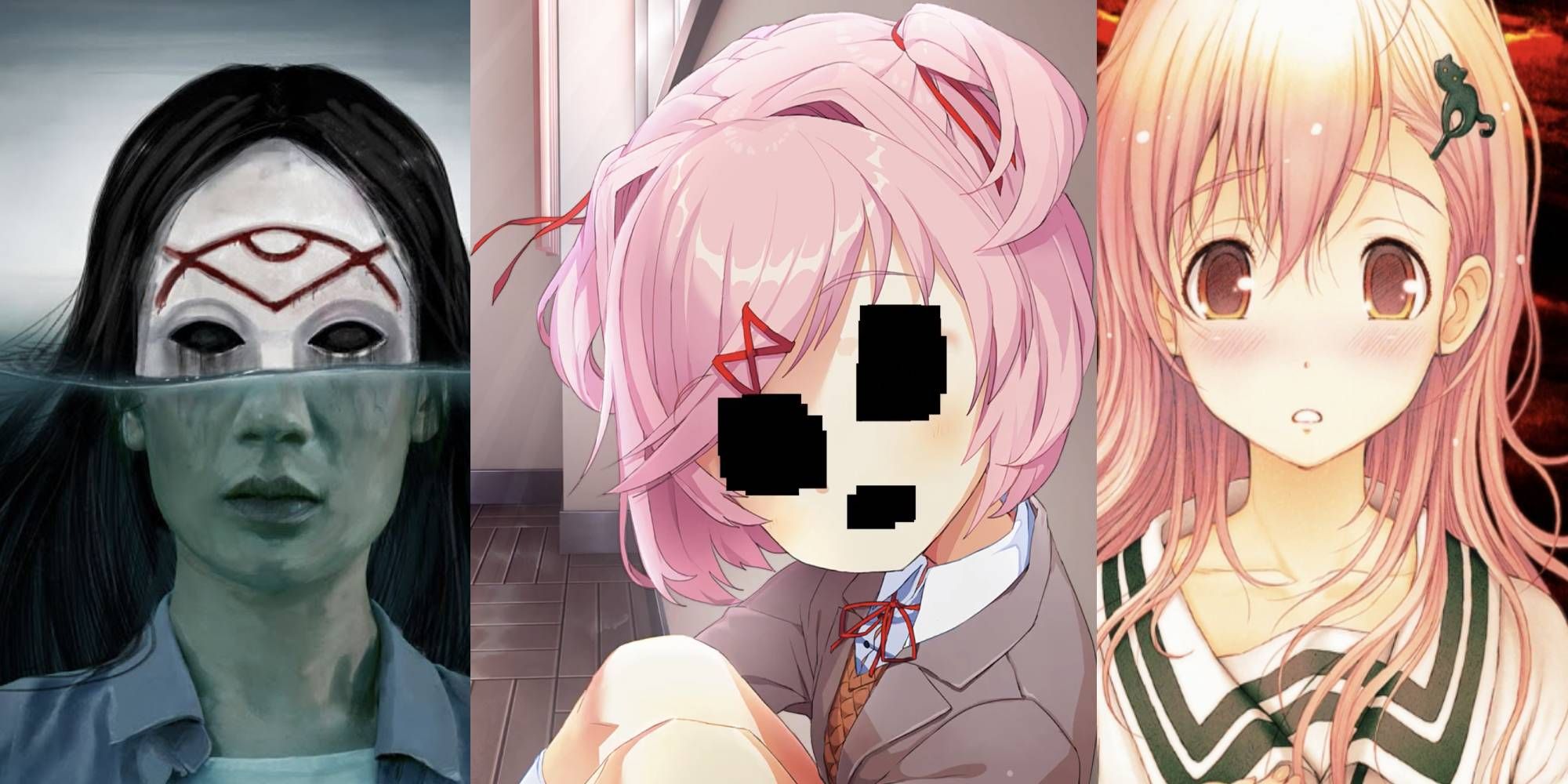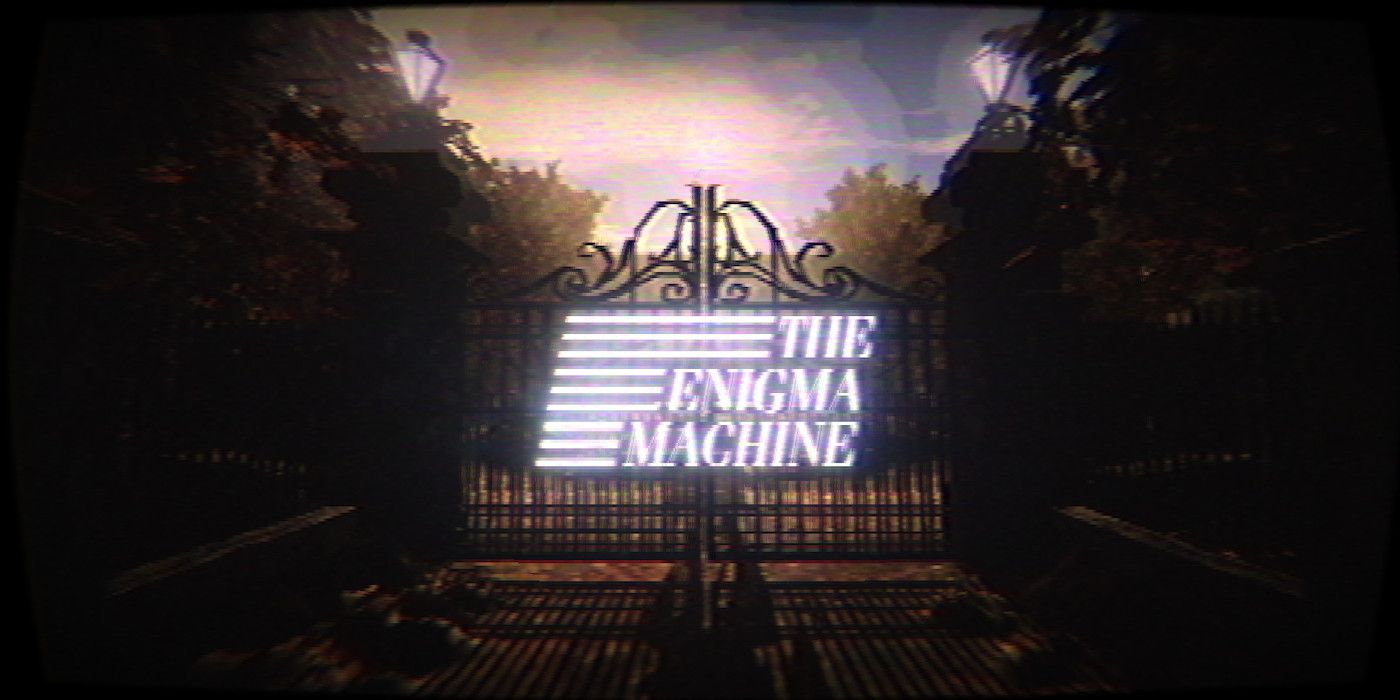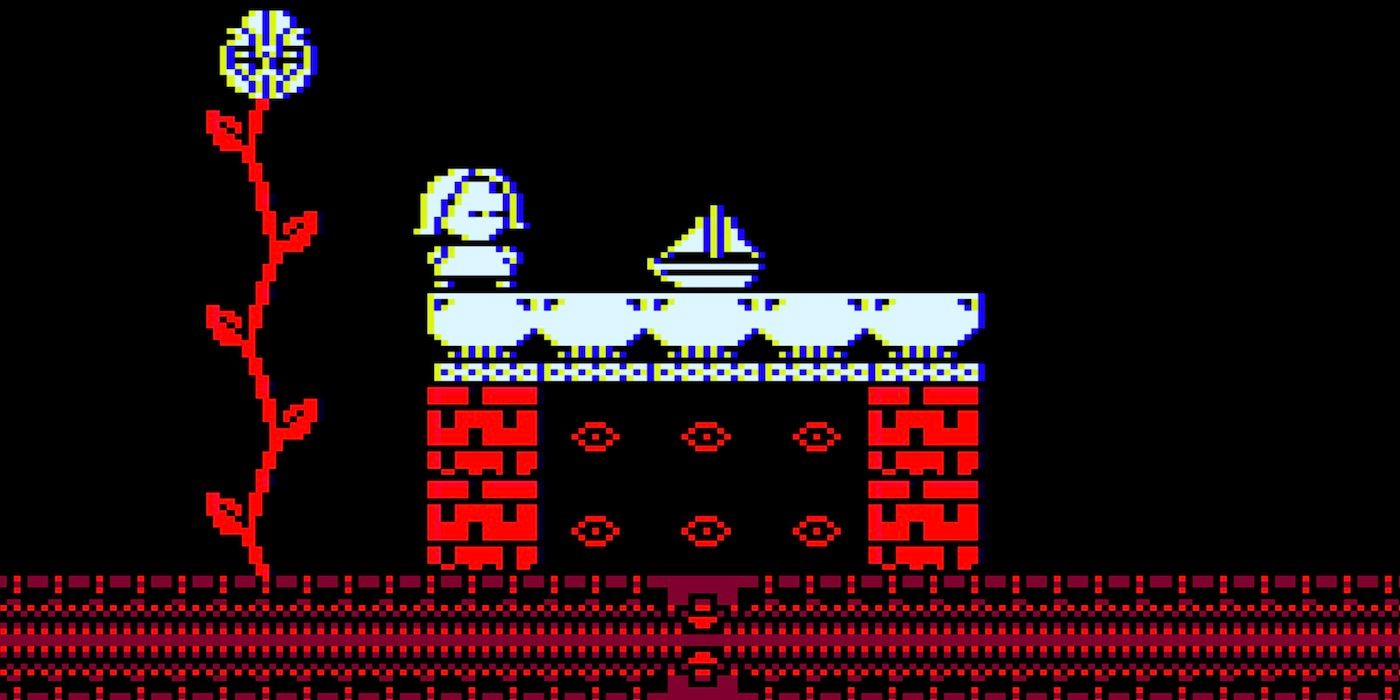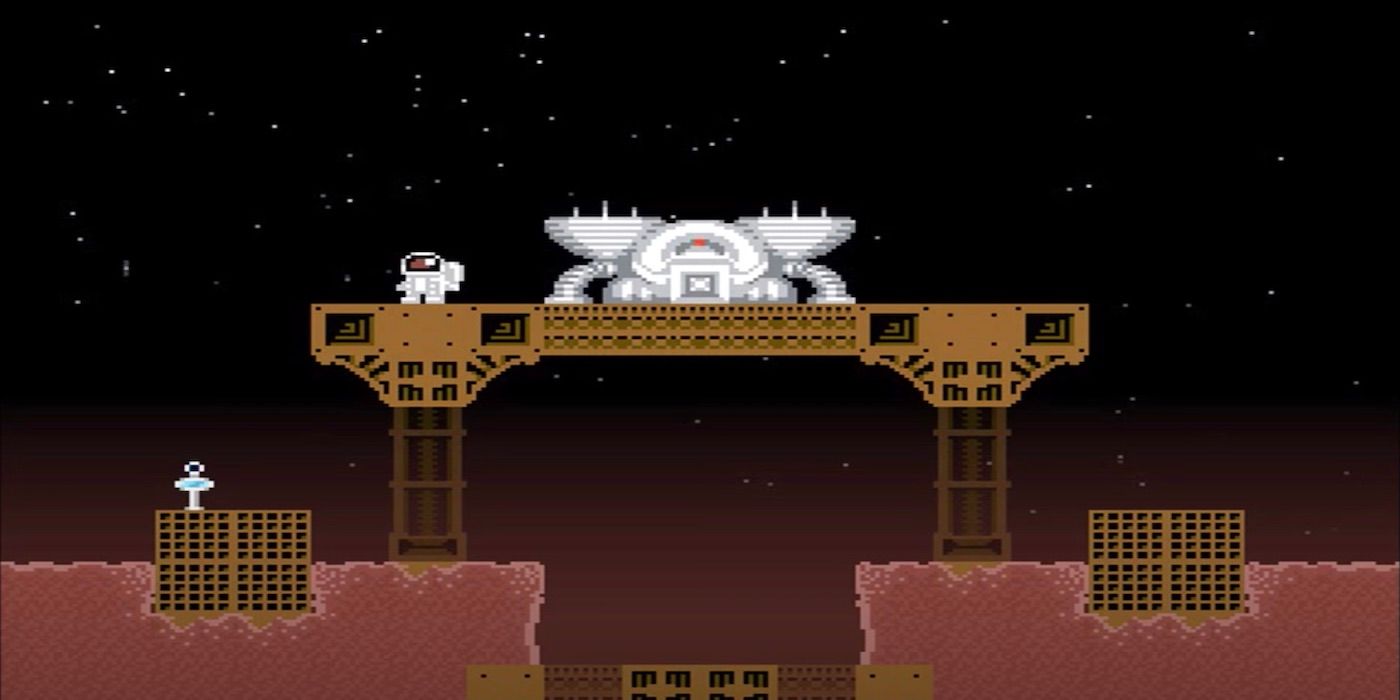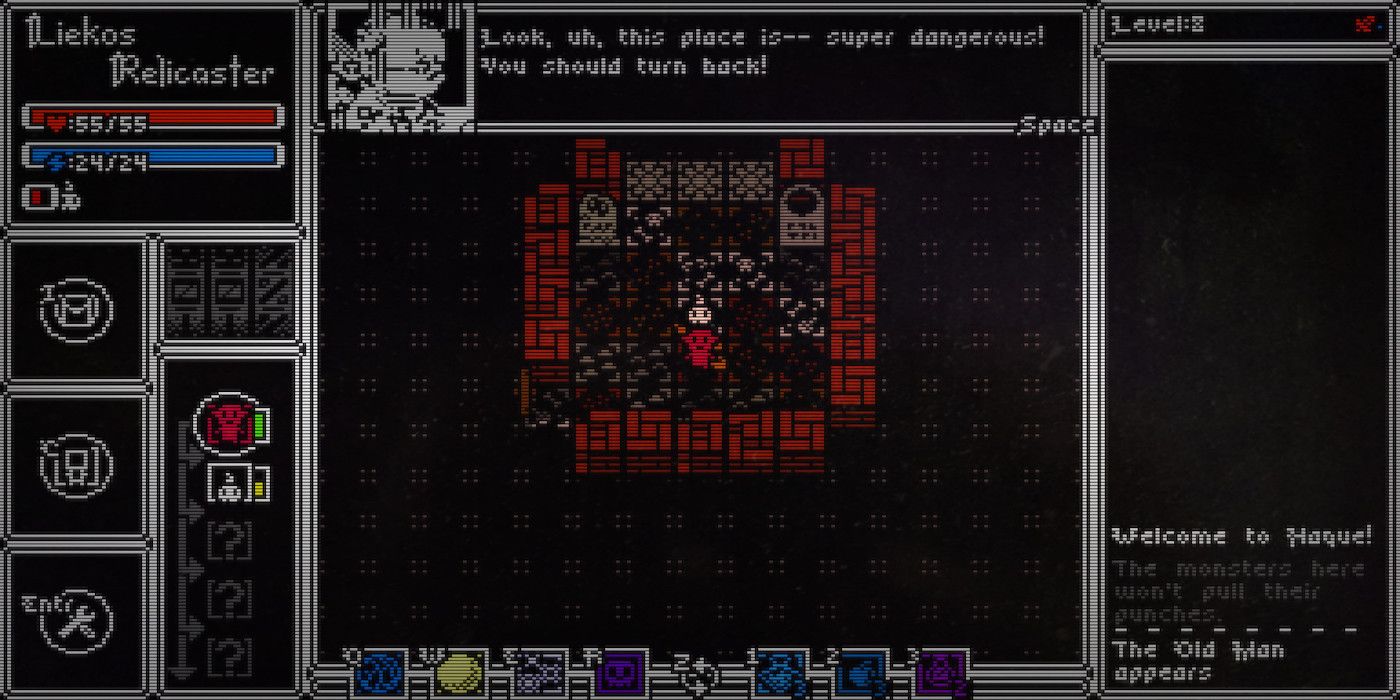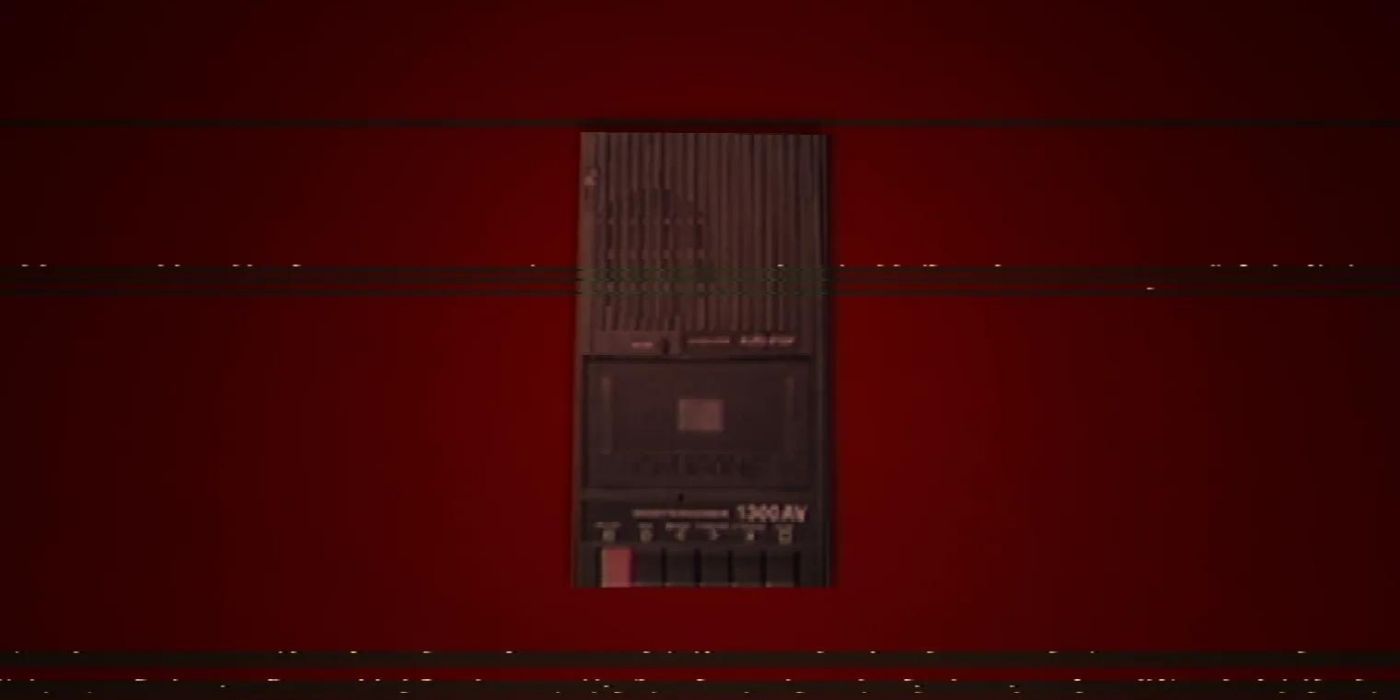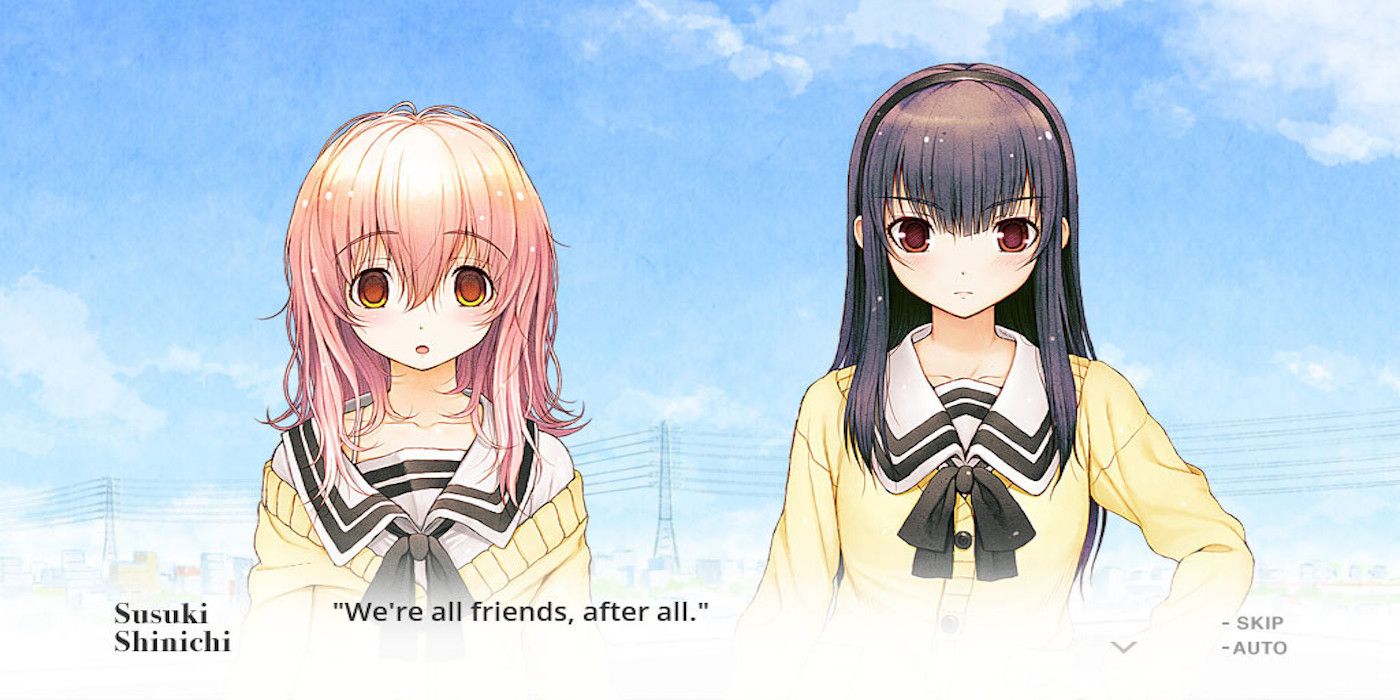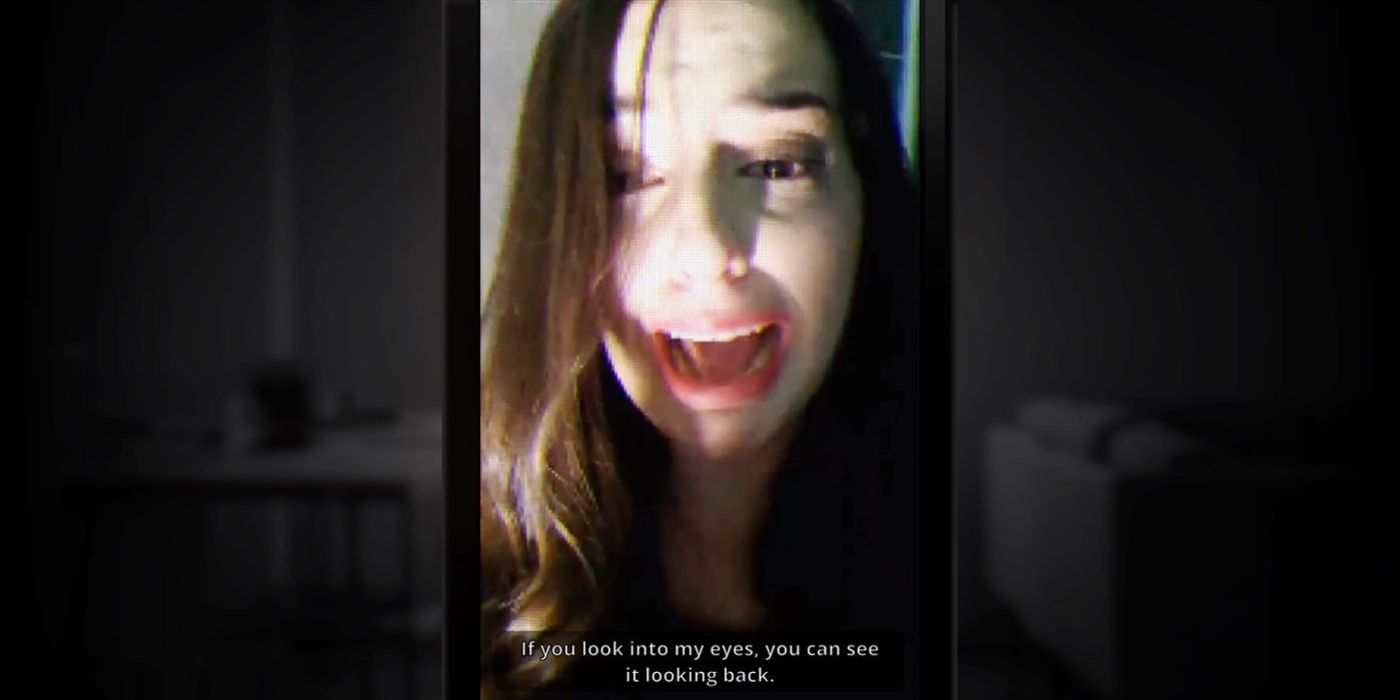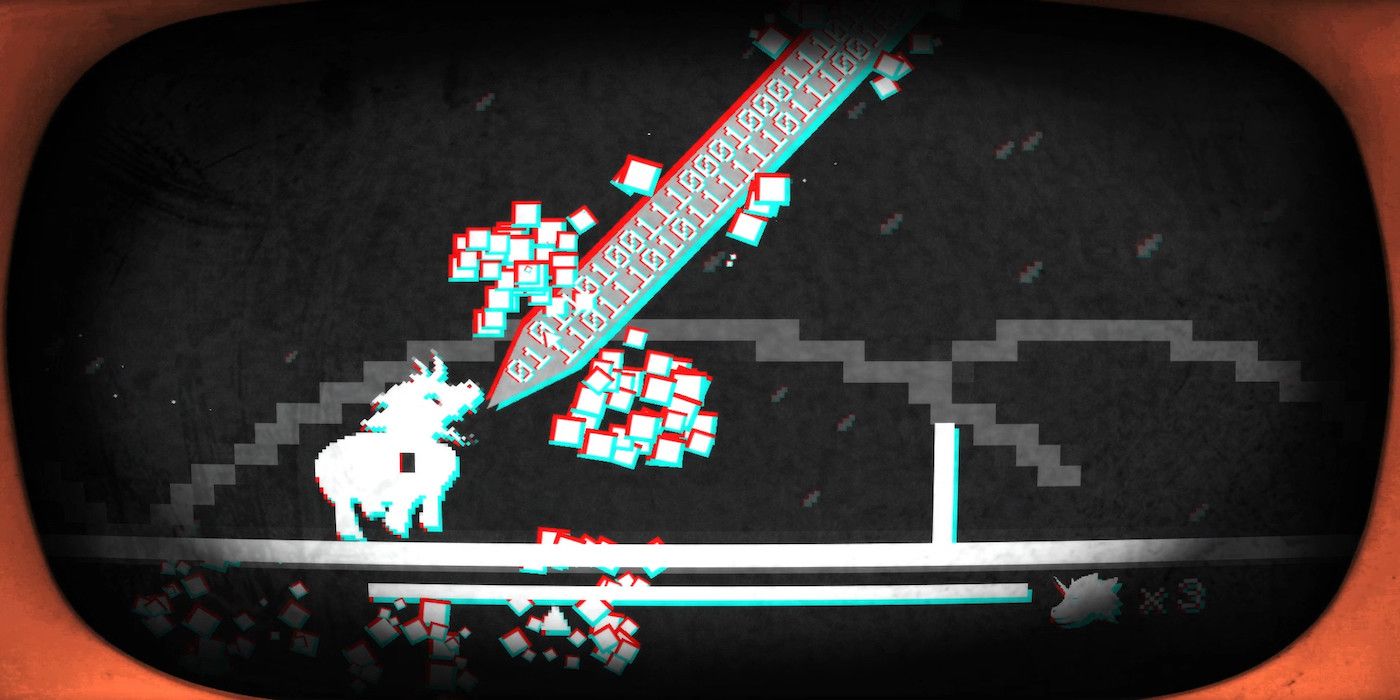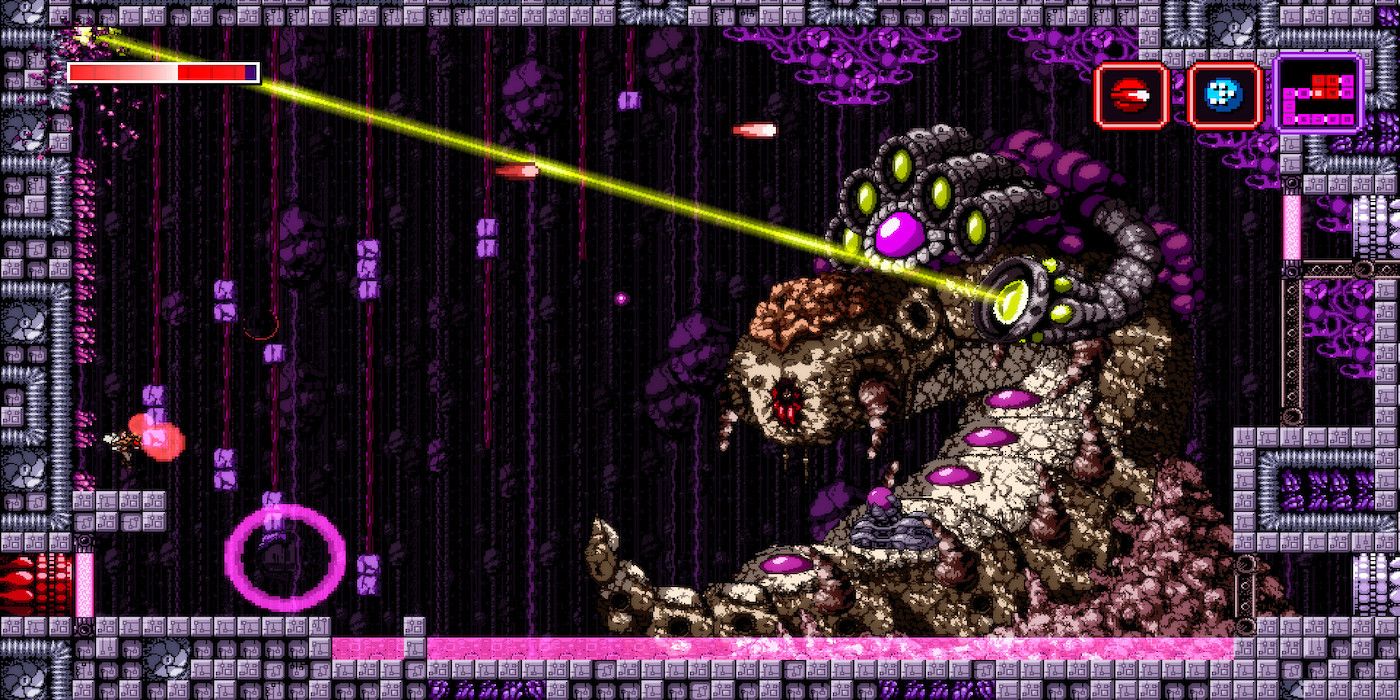While most games contain glitches that unintentionally change the experience in ways that are either funny, frustrating, or game-breaking, some games, like the upcoming horror game Simulacra 3, deliberately include glitch-like imagery or gameplay. For example, since the Simulacra series is about digital entities trying to consume human souls through their phones, the player will often witness glitches that represent the corruption while navigating the in-game phone.
Along with unnerving or scaring players, these intentional glitches can also create some unique gameplay mechanics. With the varied potential of this technique, it's not surprising that multiple titles in recent years, such as Doki Doki Literature Club, have begun utilizing glitches.
The Enigma Machine (2018)
Released in 2018, The Enigma Machine is a first-person cyberpunk horror adventure game where the player is training to become a RADE agent for Enigma Technologies. With the help of demOS, the player must explore a simulation of the mind of a contaminated A.I. using the Dreamscape program. But, as the player navigates the surreal environments, talks to demOS, and slowly decontaminates the A.I., they learn that this may be more than a simple simulation.
During the game, the glitchy visuals help make the player feel as if they're exploring the subconscious of a digital being. These visuals were also used effectively in the 2021 prequel Mothered - A Role Playing Horror Game, and will likely reappear in the upcoming sequel [Echostasis].
Strawberry Cubes (2015)
Though most games have definitive themes and messages that players are meant to pick up on, some games deliberately keep things more open-ended. One of these is the 2015 surreal puzzle platformer Strawberry Cubes, which follows a seemingly young girl who cannot jump. To explore this 16-bit world, the player will either need to climb the vines of plants or use one of the protagonist's game breaking abilities.
In a review by user ava_nvn on Glitchwave, they interviewed the developer, Loren Scmidt, who explained that the game is primarily about Scmidt's relationship to their grandmother who struggled with Alzheimer's disease towards the end of her life. While certain imagery, such as the birds and the boat, represent her as a person, the glitches and the game's slow decay represent the effects of the disease, though none of this is explicitly explained within the game itself.
REDDER (2010)
Inspired by Metroid, REDDER is a horror-based metroidvania that was originally released as a free Flash game on Newgrounds in 2010 and later re-released on Itch.io in 2016. After being forced to land on Mars because her spaceship ran out of fuel, the player controls an astronaut named Hannah as she explores the abandoned civilization on the planet and avoids their deadly defense systems.
Since she is taking the fuel resources, which are represented by glowing gems, Mars slowly begins to die. To uniquely represent this environmental damage, glitches progressively corrupt the entire map and the music becomes more distorted.
Haque (2017)
Inspired by retro DOS games, Haque is a roguelike dungeon crawler where an old man tasks the player with defeating the evil creatures throughout the land. After picking one of the three randomized characters at the start, which consists of unique classes such as werewolf sorcerers and pumpkin men, the character and their animal companion explore the world and fight enemies in this challenging but well-made experience.
But, as the player dives deeper into the world after each playthrough, the situation becomes more suspicious with glitches appearing more frequently and the old man, who acts as the narrator, interjecting with some cryptic commentary. Though retro-inspired roguelikes are incredibly common, Haque is more than just a nostalgic throwback.
Anatomy (2016)
One of the most influential indie horror titles released in recent years is the 2016 surreal body horror game Anatomy by critically acclaimed developer Kitty Horrorshow. The game follows an unnamed protagonist as they explore a dark suburban house and collect cassette tapes scattered across the rooms that explain how a house is similar to a living organism's body.
As the player explores more of the house and listens to more of the vaguely unnerving tapes, the house slowly distorts and becomes filled with flesh-covered walls and glitched textures. These moving and "breathing" environments make the originally static location feel more organic and alive.
YOU and ME and HER: A Love Story (2013)
Although Doki Doki Literature Club popularized the idea of a horror game breaking the fourth wall, there were other lesser-known titles that attempted similar ideas years beforehand, which includes the 2013 psychological horror dating sim YOU and ME and HER: A Love Story. When the generic high school male protagonist Shinichi meets the school outcast Aoi, he teams up with his estranged childhood friend Miyuki to help break Aoi out of her shell.
After they all become close friends, Miyuki and Shinichi fall in love and achieve a happily ever after. Similarly to most dating sims, the player can choose to replay the game and unlock Aoi's route instead afterwards. In this game, however, this choice will have devastating consequences and plenty of horrifying glitch-filled imagery.
Simulacra Series (2016-Present)
Since Simulacra 3 is currently in development, now is the perfect time to check out the FMV mystery horror series Simulacra. Starting with the 2016 entry Sara Is Missing, each game in the franchise has the player look through a missing person's phone and solve the mysteries by examining emails, text messages, photos, files, and more.
Though the characters involved, the exact circumstances behind the person's disappearance, and the reason why the player has the phone differs between each installment, all the entries center around digital entities known as "Simulacra." These A.I.s are trying to build a "digital utopia" by killing humans in the real world and assimilating their souls into cyberspace. Players will become acquainted with these creatures by witnessing frightening glitches through the in-game phone.
Pony Island (2016)
Released in 2016, Pony Island is a meta-horror game that was created by Daniel Mullins, who also developed the deck-building horror roguelike Inscryption. After discovering an old arcade cabinet game called Pony Island, the player immediately begins playing what initially seems to be a cute endless runner where the protagonist is a pink pony.
This harmless facade doesn't last for long, however, and the player soon discovers that the game is possessed by Lucifer who's trying to steal the player's soul. With the help of the trapped soul of a previous victim, the player must end this corrupted and glitched game by directly manipulating the program's code.
Doki Doki Literature Club Plus! (2021)
While YOU and ME and HER: A Love Story is a meta-commentary on the choices players are expected to make in dating sims, Doki Doki Literature Club Plus!, which is a 2021 remake of the original 2017 freeware title Doki Doki Literature Club, is a meta-commentary on the often forgotten side characters. This psychological horror visual novel follows a generic male high school student who joins his school's Literature Club at the insistence of his childhood friend, Sayori.
Although the game initially seems to be a typical lighthearted dating sim where the player can date three of the four club members, everything completely changes when one of the characters begins manipulating that game's code. Compared to the original version of the game, this remake has updated art, new music tracks, six new side stories, and new unlockable images.
Axiom Verge (2015)
With the recent release of the highly anticipated Axiom Verge 2 on Aug. 11, players should absolutely check out the original 2015 metroidvania Axiom Verge. This game follows a scientist named Trace who almost died in an explosion at his lab. When he wakes up, he finds himself in a biomechanical world called Sudra that was recently ruined by a pathogen brought by a man named Athetos.
With the help of Elsenova, who's part of a race of mechanical giants that survived the plague, he tries to solve the mysteries behind this alien planet and how he got there. Along with the typical weapons, items, and upgrades found in other metroidvanias, players can also deliberately glitch the in-game world in order to solve puzzles and corrupt enemies, which makes this game stand out among the rest.

